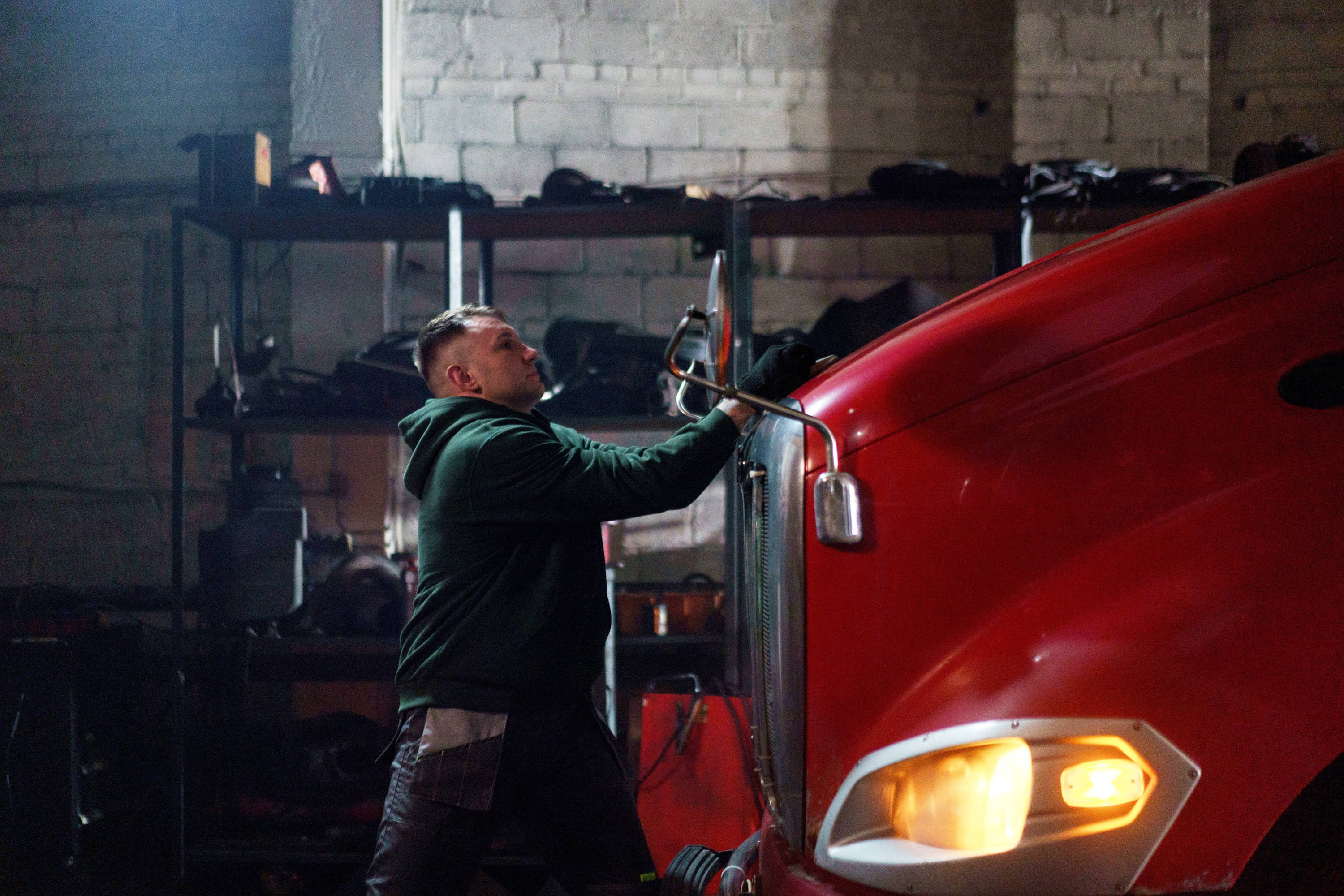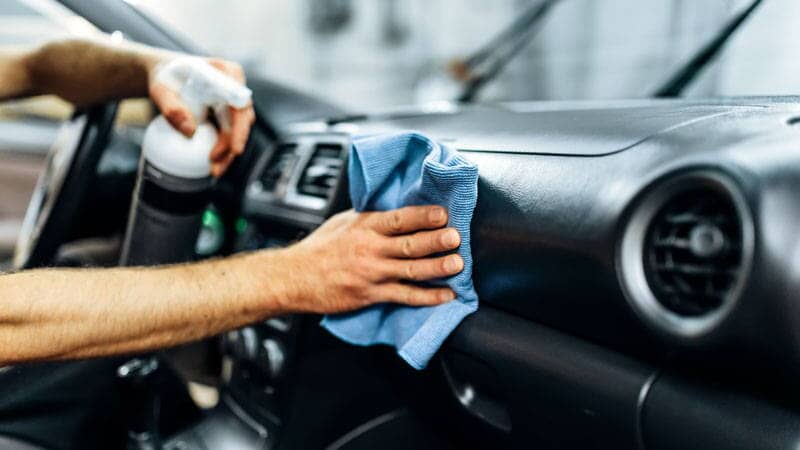When it comes to coating your car, there are many professional grade options out there that take car care into account. You can choose vinyl, paint, or even ceramic coating. But what if we told you that graphene is a better option?
Graphene is a revolutionary new material with many benefits over traditional materials like ceramic coatings. This blog post will explore the differences between graphene and ceramic coating and explain why graphene is the better choice.
Torque Detail Graphene Burst Spray
★★★★★ 6k+ Verified Customer Reviews
In just 20 minutes transform your car with a brilliant “Showroom Shine” that’s locked in and protected for up to an entire year. Never wash, wax, or scrub any surface of your car again.
What is Graphene?
Graphene is a single layer of carbon atoms bonded together in a hexagonal lattice. It is the thinnest and strongest material on earth, and it has many unique properties that make it perfect for coating vehicles.
Graphene is a ceramic coating that has been improved upon—creating a more robust, more durable paint protection with the most recent graphene-based technology. Furthermore, Graphene coatings have been found to be less prone to water beading and etching than ceramic formulations due to their lower reactivity.
What is Ceramic Coating?
Auto manufacturers were looking for a long-lasting, low-cost alternative to paint correction that would seal in UV and environmental protection. These coatings, when applied, link together and covalently bond to paint surfaces, sealing them on a molecular level and creating a hydrophobic barrier between the car and the environment.
These coatings are usually composed of various forms of Silicon, Silicon Dioxide, or other types of Silicates. This material outperforms typical carnauba waxes and polymer-based sealants in weathering resistance or deterioration.
Why is Graphene Better than Ceramic Coating?
There are several reasons why graphene is the better choice over traditional ceramic coating. Firstly, graphene is much thinner and stronger than a ceramic coating, so it provides more years of protection against scratches and environmental damage.
Additionally, graphene is more durable and less prone to water spotting and etching than ceramic coatings. Graphene is a much more environmentally-friendly material than a ceramic coating, and it is also cheaper to produce.
Graphene is better at electricity and heat absorption than a ceramic coating, making it ideal for protecting vehicles from rust and corrosion.
Pros and Cons of Graphene vs. Ceramic Coating
Now that we’ve explored the differences between graphene and ceramic coating, let’s take a look at the pros and cons of each material.
Graphene
Pros
- Thinner and stronger than ceramic coating
- More durable and less prone to water spotting and etching
- More environmentally friendly
- Cheaper to produce
Cons
- Not as widely available as ceramic coating
Ceramic Coating
Pros
- More widely available than graphene
Cons
- Thicker than graphene, so it is more likely to scratch paintwork
- More expensive than graphene coatings
- Not as environmentally friendly as graphene coatings
If you are looking for the best possible car coating, the benefits of graphene are clear. It is thinner and stronger than a ceramic coating, more durable, less expensive, and more environmentally friendly. While it is not as widely available as ceramic coating yet, that is likely to change in the near future as graphene becomes more popular. So if you are looking to protect your car, make sure to ask for graphene coating the next time you get it detailed!
Torque Detail Graphene Burst Spray
★★★★★ 6k+ Verified Customer Reviews
In just 20 minutes transform your car with a brilliant “Showroom Shine” that’s locked in and protected for up to an entire year. Never wash, wax, or scrub any surface of your car again.
Is One More Expensive?
While there is no drastic price difference between the two, graphene will cost a few dollars more. Our Graphene Burst Coat - Spray-On Graphene Ceramic Coating currently costs $44.95, and our Ceramic Spray - Spray On Ceramic Coating is $39.95.
Graphene is worth the extra money due to its longevity and environmentally friendly properties. So if you are looking for a long-lasting, durable coating for your vehicle, graphene is the way to go.
How Do You Apply Graphene?
Graphene products or graphite can be applied in various ways, including spray coating, roll coating, and dip coating. It is essential to choose the correct method for your specific application.
How Should I Prepare My Car For the Graphene Coating?
For prep work, the first step is to wash your car and remove any dirt, dust, or debris. Once your car is clean, you will need to clay bar the surface to remove any contaminants stuck to the paint.
After you have clayed the surface, you will need to polish the car to create a smooth surface and slickness for the graphene to adhere to. Once the car is polished, you can apply the graphene coating.
Applying a graphene coating is a simple process, but it is essential to follow the instructions carefully.
How to Apply a Graphene Coating
There are three main methods of applying graphene: spray coating, roll coating, and dip coating.
Spray coating is the most popular method of applying graphene. It has a great ease of application and it provides a thin, even coating.
You will need to use a high-quality graphene sprayer to spray coat your car. We recommend using our Graphene Burst Coat - Spray-On Graphene Ceramic Coating.
Step One: Wash the Car Thoroughly
For graphene to do its job, you need to start with a clean surface. This means washing the car thoroughly, inside and out. Use mild soap and water to remove dirt, dust, or debris. We recommend our Full Decon Kit - Decontamination Soap, Wash Mitt, Clay Lube, and Reusable Clay Pad, which has everything you need to get your car ready for the graphene.
Step Two: Dry the Car Completely
Once you have washed the car, you need to make sure it is completely dry. Any water left on the surface can interfere with the graphene’s ability to bond properly. We recommend using a leaf blower or compressed air to remove any water from nooks and crannies.
Step Three: Clay Bar the Surface
Once your car is clean, you will need to clay bar the surface to remove any contaminants that are stuck to the paint. This step is crucial because it will help the graphene adhere better to the surface of your car. Use the clay bar included in our Decon Kit, and you will be all set to go. Make sure you clean up any residue to ensure the graphene adheres properly.
Step Four: Apply the Graphene
Now you are ready to apply the graphene. Start by shaking the can well and then hold it about six inches away from the surface of your car. Then, apply an even, thin layer in small sections. We recommend choosing areas that are only a couple of square feet each. This will ensure proper coverage and make it less likely that you will miss a spot.
Step Five: Cover the Entire Car
Using a microfiber towel primed with the spray, use a straight line motion to cover the car with the graphene products completely. Working in small sections will make this process much easier.
Step Six: Buff the Car
After applying the graphene, you need to buff the car to remove any excess. Use a clean microfiber towel and buff until your car shines as much as you want.
Step Seven: Allow the Graphene to Cure
To ensure that the graphene is fully set, leave it to cure for 6-12 hours in a cool, dry place. You should take precautions to avoid moisture, dirt, and debris from getting onto your car during this period.
If you can, avoid driving your automobile during this time to prevent anything from harming the graphene. After the cure time is up, your car will be ready to take on the world.
Ways to Protect the Graphene Coating
Now that you have applied the graphene, you need to take steps to protect it. The first step is to avoid washing your car for at least 24 hours. This will give the graphene time to cure and bond with the paint thoroughly.
Once the 24 hours have passed, you can go back to your regular washing routine. Just be sure to use mild soap and water and avoid any harsh chemicals or cleaners. You should also avoid exposing your car to direct sunlight or high temperatures during this period. We recommend our Ceramic Car Wash for keeping your vehicle clean.
Also, avoid using automatic car washes as the chemicals used can damage your new graphene coating.
Torque Detail Graphene Burst Spray
★★★★★ 6k+ Verified Customer Reviews
In just 20 minutes transform your car with a brilliant “Showroom Shine” that’s locked in and protected for up to an entire year. Never wash, wax, or scrub any surface of your car again.
The Graphene vs. Ceramic Coating Debate
Now that you know how to apply a graphene coating, you may be wondering whether it is better than a ceramic coating. There are pros and cons to both types of coatings, but ultimately it comes down to the power of graphene.
Graphene coatings are more durable and offer better protection against UV rays and chemicals than ceramic coatings. They also last longer, with most manufacturers offering a warranty of up to five years.
Ceramic coatings are easier to apply and remove than graphene oxide coatings. They also provide reasonable protection against UV rays and chemicals, but they are not as good as graphene.
The bottom line is that both types of coatings have their own advantages and disadvantages. It is up to you to decide which one is better for your needs. But if you are looking for the best coverage and protection, graphene is the way to go. We hope this article has helped you understand the difference between graphene and ceramic coatings.







